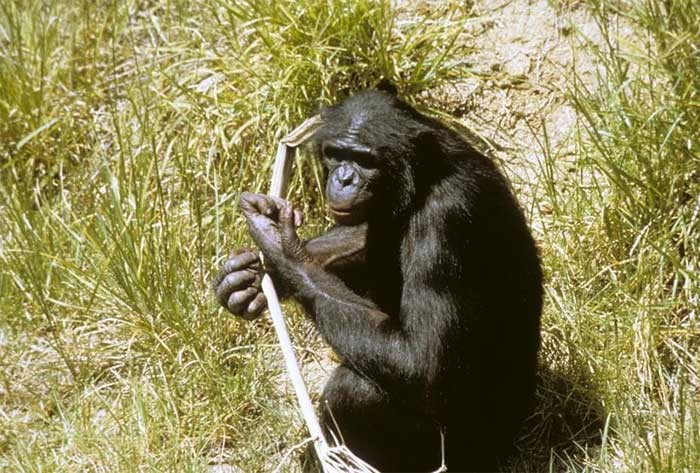Previously, when conducting a long-term experiment, scientists from the Chicago Institute of Mind and Biology in the United States asserted that, excluding humans, dolphins were the animals with the longest memory, lasting over 20 years.
However, a recent study conducted by researchers at the University of California, Berkeley, alongside experts from Johns Hopkins University, has indicated that chimpanzees can recognize family and friends, even if they have not met for several decades, breaking the dolphin’s record.

Chimpanzees can recognize family and friends after decades apart. (Photo: search.library.wisc)
Christopher Krupenye, an assistant professor at Johns Hopkins University, along with Laura Simone Lewis, a biological anthropologist and comparative psychologist at the University of California, Berkeley, began to determine how to test the memory of chimpanzees. In reality, conducting such an experiment requires extensive preparation to understand the genealogy of the studied species and to collect matching images for the trial.
To start, the team traced images of chimpanzees and bonobos at the Edinburgh Zoo in Scotland, Planckendael Zoo in Belgium, and the Kumamoto Sanctuary in Japan based on genealogy, including images of animals that had been moved to another zoo or isolated apart for at least a year or more.
After considerable effort, the research team collected valuable matching recognition images for 26 chimpanzees and bonobos to view.
To conduct the experiment, the research team set up a computer with a sensitive camera integrated with a non-invasive eye-tracking system. The participating animals were allowed to voluntarily enter a room, where they were given diluted fruit juice to drink.
While sipping on the fruit juice, the chimpanzees were shown pairs of images on the computer screen, including one of an old acquaintance from their family or friends who had been isolated, alongside images of completely unfamiliar chimpanzees. The eye-tracking cameras recorded the time the chimpanzees spent on each image.
The results showed that the tested chimpanzees looked longer at the images of familiar individuals. At times, some even stopped drinking juice to gaze intently at those images. Notably, a bonobo named Louise was observed staring for a long time at an image of her sister Loretta and her nephew Erin, individuals she had not seen in 26 years.
Currently, researchers do not know exactly what is happening in the brains of these chimpanzees as they gaze intently at these images. This is a question they hope to decode further in their future studies.


















































